Is Diaper Safe For Newborn Baby?
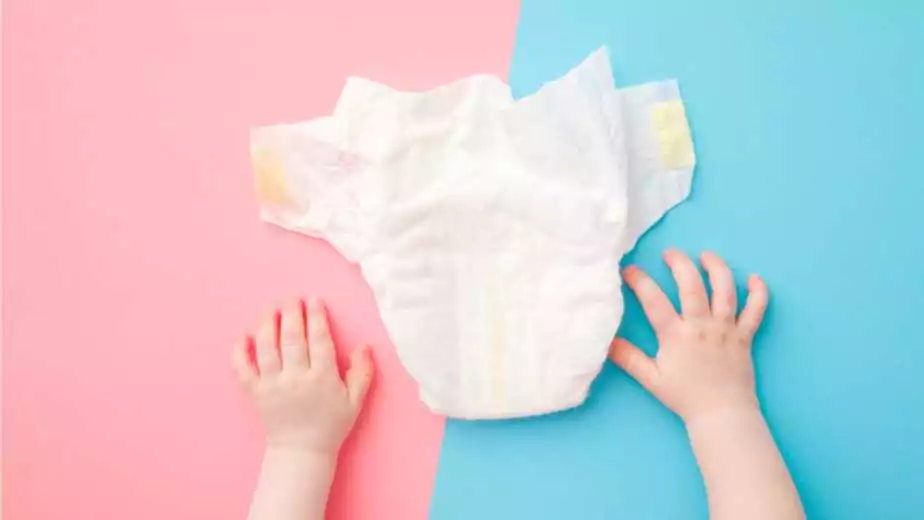
Welcoming a newborn into the world is an experience filled with joy, love, and quite a few responsibilities. Among these responsibilities is the critical task of ensuring the comfort and health of your baby, which often leads new parents to an important question: “Is diaper safe for newborn baby?” This question reflects a common concern among parents, especially first-timers, as they navigate the myriad of choices available in baby care.
In this blog, we will delve deep into the world of diapers, focusing specifically on the needs and safety of newborns. Our exploration will cover key topics that resonate with new parents, such as how to properly wear diapers for newborns, which diaper options are best suited for your baby, and the often-asked questions: “Can we use diapers for newborns?” and “Can I use cloth diapers for newborn babies?”
Understanding the right type of diaper for your newborn is not just about convenience; it’s also about ensuring the health and comfort of your little one. With the right information, you can make an informed decision that aligns with your baby’s needs, your parenting style, and your environmental concerns. So, let’s embark on this journey together, unravelling the intricacies of diapering for newborns and ensuring that you are well-equipped to make the best choices for your little bundle of joy.
1 Understanding Newborn Skin and Diaper Needs
The Sensitivity of Newborn Skin

The skin of a newborn is incredibly delicate, almost five times thinner and more sensitive than an adult’s. This heightened sensitivity means that newborns are more susceptible to irritants, changes in temperature, and allergens. Their skin is not only delicate but also highly absorptive, making it crucial to use gentle and safe products that come into contact with their skin.
When it comes to diapering, this sensitivity must be a primary consideration. Unlike older babies, newborns have not yet developed a fully functioning skin barrier, making them more prone to irritation and rashes. These rashes aren’t just uncomfortable; they can lead to further skin complications if not addressed properly.
The Importance of Gentle, Protective Diapers
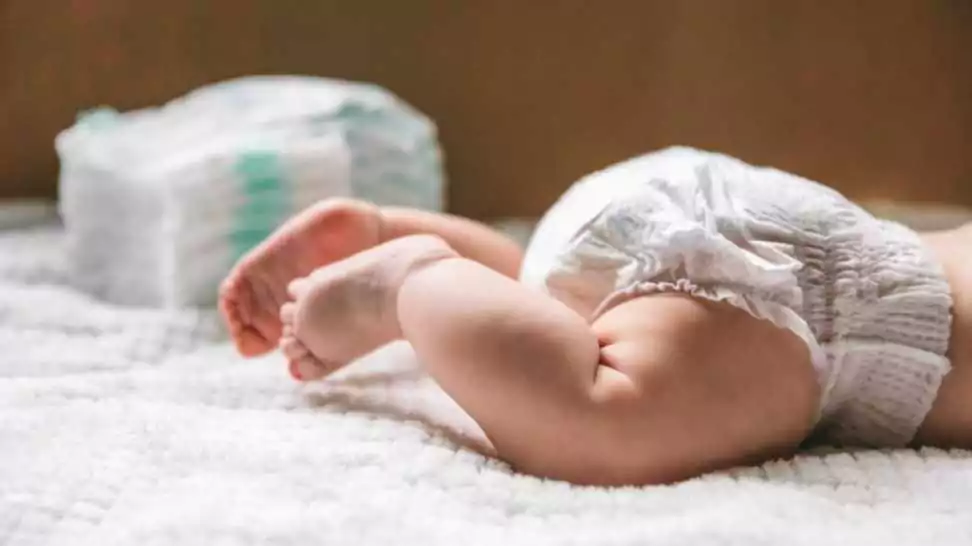
Choosing the right diaper is not just a matter of size and fit; it’s about finding a product that can protect your newborn’s sensitive skin from irritation and rashes. The ideal diaper for a newborn should have the following qualities:
- Soft and Gentle Material: Look for diapers that are made from ultra-soft materials that are gentle against the baby’s skin. Harsh materials can cause friction and lead to irritation.
- High Absorbency: A highly absorbent diaper keeps moisture away from the baby’s skin. This is crucial in preventing diaper rash, as prolonged exposure to wetness is one of the primary causes of skin irritation in babies.
- Breathable Design: Diapers that allow air circulation help to keep the skin dry and prevent overheating, which can exacerbate skin sensitivity and lead to rashes.
- Chemical-Free: Opt for diapers that are free from harsh chemicals, fragrances, and dyes. These substances can trigger allergic reactions and irritations in newborns.
- Proper Fit: A well-fitting diaper reduces the risk of leaks and minimises friction against the skin. It should be snug but not too tight, allowing room for movement without chafing.
2 How to Wear Diapers for Newborn?
Diapering a newborn, while a seemingly simple task, requires a gentle touch and attention to detail. Proper diapering is essential not only for the baby’s comfort but also for preventing leaks and skin issues. Here’s a step-by-step guide to help you master the art of diapering your newborn, along with some helpful tips and visual aids for clarity.
Step-by-Step Guide to Diapering a Newborn
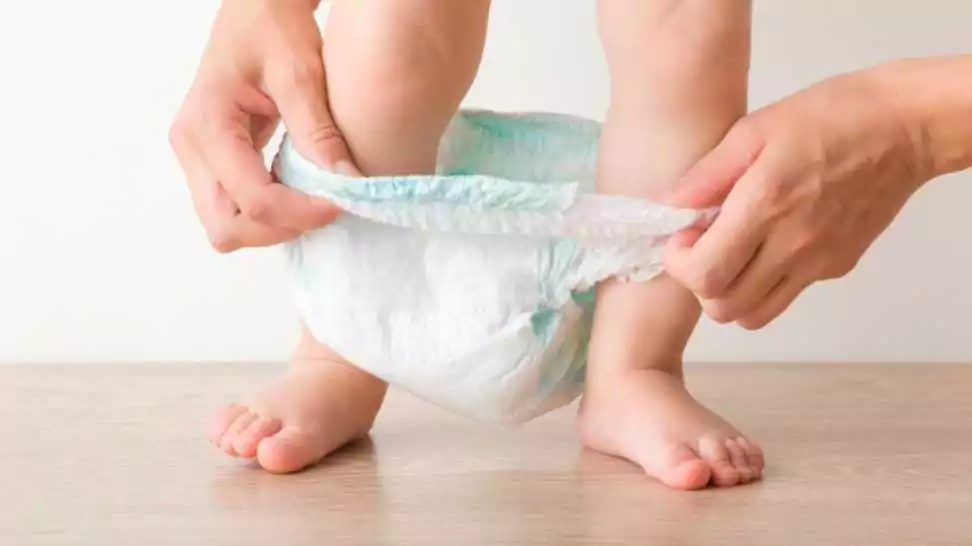
Prepare the Diapering Area: Before you begin, ensure that you have all the necessary supplies within reach – a clean diaper, baby wipes, diaper rash cream (if needed), and a changing mat or towel.
- Clean and Dry the Baby’s Bottom: Gently lay your baby on the changing mat and remove the soiled diaper. Use baby wipes to clean the area, ensuring you wipe from front to back to avoid infection. Make sure the baby’s skin is completely dry before putting on a new diaper.
- Place the Diaper: Open the new diaper and lift your baby’s legs gently by the ankles. Slide the diaper under the baby, ensuring the back part with the adhesive strips is slightly under the waist.
- Secure the Diaper: Pull the front part of the diaper up between your baby’s legs and onto their belly. Secure the adhesive strips on both sides, ensuring the diaper is snug but not too tight. The diaper should be level on both sides, and the waistband should be straight and parallel to the floor.
- Check for Comfort and Fit: Gently run your fingers around the edges of the diaper to ensure there are no gaps and that the diaper isn’t too tight around the legs or waist. The diaper should allow for comfortable movement without any restrictions.
Tips for Ensuring Comfort and Avoiding Mistakes
- Do Not Over-Tighten: A diaper that is too tight can cause skin irritation and discomfort. Ensure that you can fit two fingers between the diaper and your baby’s stomach.
- Fold Down the Diaper for Newborns: If your baby still has an umbilical cord stump, fold the diaper down at the front to prevent rubbing against it.
- Regularly Check for Wetness: Newborns may need to be changed every two to three hours, or immediately after a bowel movement. Check for wetness by feeling the diaper or looking for a wetness indicator, if available.
- Use the Right Size: Ensure the diaper fits your baby properly. Diapers that are too small can cause leaks and discomfort, while too large ones can lead to blowouts.
3 Which Diaper is Best for Newborn Baby?
Selecting the right diaper for your newborn can be a daunting task, given the variety of options available in the market. To make an informed decision, it’s important to understand the differences between the types of diapers – disposable, cloth, and biodegradable – and evaluate their pros and cons about the specific needs of a newborn.
Comparison of Diaper Types
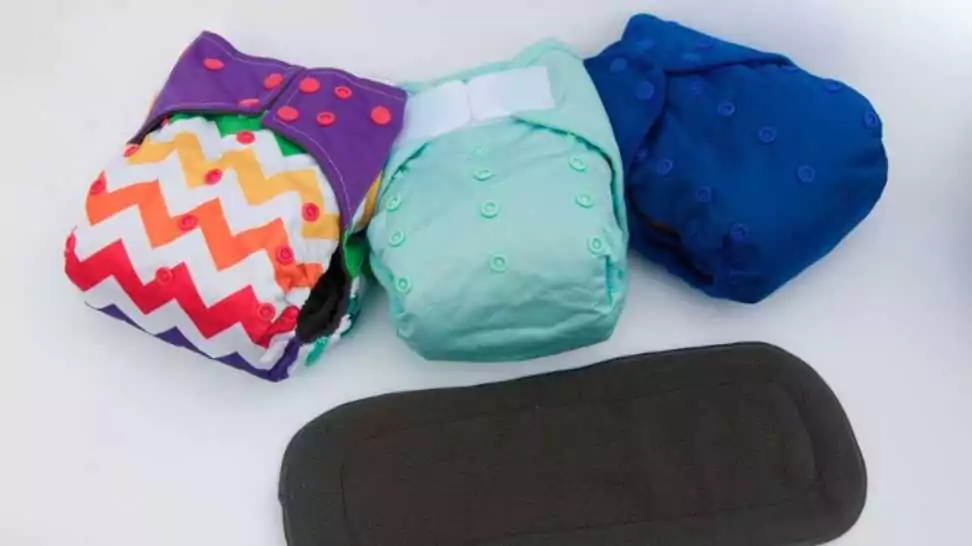
Disposable Diapers:
Pros: Highly absorbent, convenient, often comes with wetness indicators, and is widely available. They’re designed for one-time use, which means no washing is required.
Cons: Can be expensive over time, not environmentally friendly, and some may contain chemicals that could irritate sensitive skin.
Cloth Diapers:
Pros: Environmentally friendly, cost-effective over time, free from chemicals found in some disposables, and available in various styles and materials.
Cons: Require regular washing, less absorbent than disposables which may lead to more frequent changes, and can be less convenient when travelling.
Biodegradable Diapers:
Pros: More environmentally friendly than standard disposables, often made with natural materials which can be better for sensitive skin.
Cons: Can be more expensive, availability might be limited, and not all are completely biodegradable.
Focus on Newborn Needs
For newborns, the priority is often on gentle materials to prevent irritation, high absorbency to handle frequent urination, and a good fit to prevent leaks. While disposable diapers excel in convenience and absorbency, cloth diapers are a more environmentally friendly choice and may be kinder to sensitive skin. Biodegradable diapers offer a balance between environmental concerns and convenience but may come with a higher cost.
Recommendations Based on Expert Opinions and Consumer Reviews
When choosing diapers for your newborn, it’s worthwhile to consider expert paediatric advice and consumer reviews. Paediatricians often recommend:
- For Sensitive Skin: Cloth or biodegradable diapers, as they are usually free from chemicals and fragrances that can irritate sensitive skin.
- For Convenience: Disposable diapers, especially for parents who are always on the go or find laundry burdensome.
- For Eco-conscious Parents: Cloth or biodegradable diapers, as they have a lower environmental impact compared to standard disposables.
4 Can We Use Diapers for Newborns?
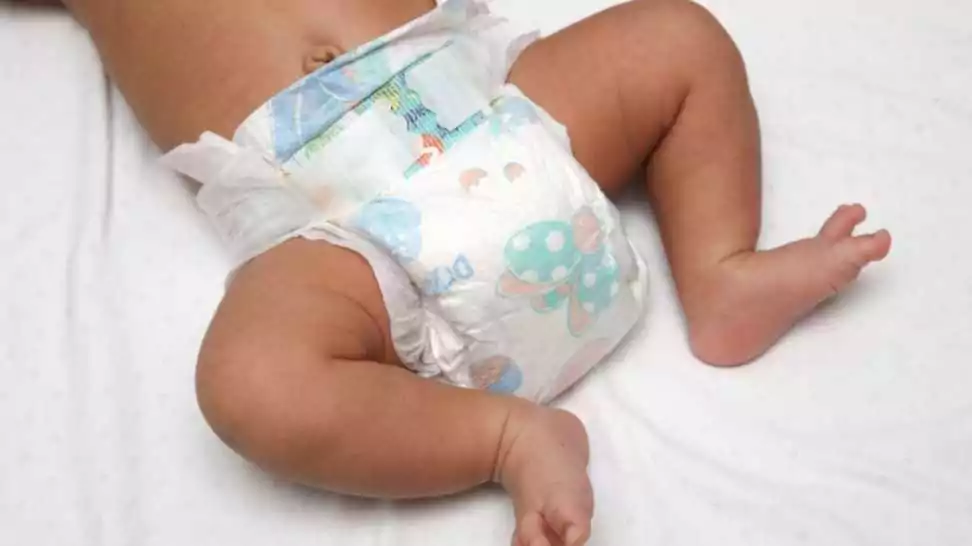
One of the most common questions new parents ask is whether it is safe to use diapers for newborns. There are several myths and concerns surrounding the use of diapers for babies just a few days or weeks old. In this section, we’ll address these concerns, discuss any health implications, and provide insights from paediatricians and childcare experts.
Addressing Common Concerns and Myths
- Diapers Cause Skin Irritation and Rashes: While it’s true that diapers can contribute to rashes, this is often due to factors like infrequent changing or using the wrong type of diaper. Choosing the right diaper and changing it frequently can significantly reduce the risk of diaper rash.
- Diapers Hinder Natural Movement: Modern diapers are designed to be flexible and comfortable, allowing newborns to move freely. The key is to ensure the diaper fits well without being too tight or too loose.
- Diapers Can Affect Baby’s Development: There is no evidence to suggest that wearing diapers affects a baby’s physical or developmental milestones. The focus should be on the comfort and hygiene of the baby.
Health Implications and Mitigation
The primary health concern associated with diaper use in newborns is diaper rash, a form of dermatitis that occurs in the diaper-covered region. To mitigate this:
- Change Diapers Frequently: Newborns typically need their diapers changed 10-12 times a day. Regular changes prevent prolonged exposure to wetness, a major cause of diaper rash.
- Choose the Right Size and Type: Ensure the diaper fits snugly but isn’t too tight. Consider using hypoallergenic or fragrance-free diapers for sensitive skin.
- Maintain Hygiene: Clean the diaper area with gentle wipes or a soft cloth and water. Allow the skin to air dry before putting on a new diaper.
- Use Rash Creams When Necessary: Barrier creams or ointments containing zinc oxide can help prevent and treat diaper rash.
Insights from Paediatricians and Child Care Experts
Paediatricians and child care experts generally agree that diapers are safe for newborns when used appropriately. They emphasise the importance of:
- Choosing Diapers Designed for Newborns: These diapers have a cut-out area to accommodate the umbilical cord stump, reducing irritation.
- Monitoring for Allergic Reactions: Some babies may react to certain materials or chemicals in diapers. Parents should monitor their baby’s skin for any signs of allergy or irritation.
- Balancing Diaper Use with Air Time: Allowing some diaper-free time each day can help keep the baby’s skin dry and healthy.
5 Cloth Diapers for Newborns

Cloth diapers have been making a comeback, especially among parents who are environmentally conscious or concerned about the potential chemicals in disposable diapers. This section takes an in-depth look at cloth diapers, covering their types, benefits, drawbacks, usage, maintenance, and their impact on both the environment and your budget.
Types of Cloth Diapers
- Flat and Prefold Diapers: The traditional choice, these are simple cloth squares or rectangles that you fold and secure with diaper pins or Snappi fasteners. They are economical and versatile but require a waterproof cover.
- Fitted Diapers: These are shaped like a disposable diaper and have elastic around the legs and waist. They are more absorbent and usually require a cover to be waterproof.
- Pocket Diapers: A modern version, these have a pocket for inserting absorbent pads. They are easy to use but require additional time for stuffing and unstuffing the inserts.
- All-in-Ones: The most user-friendly, they are similar to disposable diapers in design. They integrate absorbent layers with a waterproof exterior but can be bulkier and take longer to dry.
Benefits and Drawbacks
Benefits:
- Eco-Friendly: Cloth diapers reduce landfill waste and are more sustainable than disposables.
- Cost-Effective: They can be more economical in the long run, especially if used for multiple children.
- Gentle on Skin: Cloth diapers are free from chemicals found in some disposables, which is beneficial for babies with sensitive skin.
- Adjustable Absorbency: You can adjust the absorbency to suit your baby’s needs, which is especially useful at night.
Drawbacks:
- Convenience: They require washing, which can be time-consuming.
- Upfront Investment: The initial cost is higher than buying a pack of disposables.
- Learning Curve: It takes time to learn how to properly fit and use different types of cloth diapers.
- Bulkiness: Some cloth diapers can be bulkier than disposables, which might affect how baby clothes fit.
Proper Use and Maintenance
- Washing: Develop a routine for washing cloth diapers every 2-3 days. Use a gentle, fragrance-free detergent and avoid fabric softeners that can decrease absorbency.
- Drying: Air dry when possible to extend the life of the diapers. Some types can be tumble-dried on low heat.
- Storing Used Diapers: Keep soiled diapers in a dry pail with a liner until it’s time to wash.
Environmental Impact and Cost-Effectiveness
Cloth diapers have a significantly lower environmental impact compared to disposables, which take hundreds of years to decompose. The cost-effectiveness of cloth diapers becomes apparent over time, particularly if they are used for more than one child. The initial investment is offset by the savings of not having to purchase disposables regularly.
6 Wrapping Up
As we wrap up our comprehensive exploration into the world of newborn diapering, let’s revisit the key insights and takeaways from our discussion. The journey of selecting and using diapers for your newborn, while seemingly daunting, can be navigated with ease and confidence when armed with the right information.
In summary, the world of diapers is diverse, and there is no one-size-fits-all answer. The best choice depends on your baby’s individual needs, your lifestyle, and your family’s preferences. We encourage you to use the insights from this blog as a starting point to make informed decisions that work best for you and your newborn. Remember, each baby is unique, and what works for one may not work for another. Trust your instincts as a parent, and don’t hesitate to consult with paediatricians for personalised advice.
Thank you for joining us on this informative journey. May your diapering experience be as smooth and comfortable as possible for both you and your little one!
Community Q&A
About This Article
This article has been viewed 137 times.



